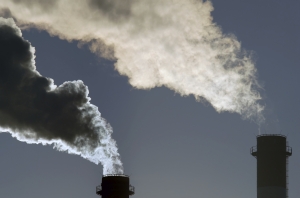MELBOURNE, September 21, 2016 – New analysis by energy advisory firm, RepuTex, indicates that industry may soon face greenhouse gas emissions cuts under the government’s safeguard mechanism, with emissions baselines needing to decline by over 5 per cent per year from 2020 for Australia to meet its 2030 emissions reduction target.
Following the release of the Climate Change Authority’s Special Review, which proposed that a ‘toolkit’ of policy measures be introduced to meet Australia’s emissions target – but made few detailed recommendations – the RepuTex report sheds new light on the state and federal policy settings needed to meet Australia’s emissions reduction target.
According to RepuTex, emissions increases are already creating a sizeable challenge for Australia to meet its target under the Paris Agreement, with national emissions projected to grow 9 per cent through to 2030, driven by LNG export demand and increased land-clearing activity. In cumulative terms, this will create an abatement task of almost 1 billion tonnes of CO2-e between 2020 and 2030 for Australia to meet its emissions target.
Growth will see national emissions reach just 2 per cent below 2005 levels by 2030, compared to Australia’s pledge of 26 per cent below 2005 levels.
This is despite current policy, such as the Coalition’s Emissions Reduction Fund, plus new state-based renewable energy targets, such as those announced in the ACT, Queensland, South Australia and Victoria.
“The roll out of state renewable energy policy will have a major impact in curbing national emissions, however even with ambitious state action, we anticipate a large shortfall to meet the 2030 target,” said RepuTex Executive Director, Hugh Grossman.
According to RepuTex, this raises the prospect that industry may eventually be required to deliver large-scale emissions cuts.
“State and federal policy will ultimately need to align industry emissions with Australia’s 2030 target. That could come in the form of declining emission baselines under the safeguard mechanism or a state based trading scheme” said Mr Grossman.
“Analysis indicates that national emissions will need to be reduced by 8 to 9 million tonnes of CO2-e (Mt) annually to meet Australia’s 2030 target”.
“If industry is asked to deliver emissions reductions at this scale, we estimate emissions baselines would need to decline around 5 per cent per annum, relative to current baselines, to be consistent with our 2030 target,” he said.
According to RepuTex, without the contribution of industry, aggressive policy settings would be required to achieve these emissions reductions, such as considerable increases in ERF funding, in addition to ambitious energy and vehicle efficiency policy settings.
“Without tighter emissions baselines under the safeguard mechanism, Australia’s policy mix would need aggressive action in other areas to meet the 2030 target. That could include the tripling of funding for the Emissions Reduction Fund (ERF) and generation from rooftop photovoltaics (PV), while rates of electricity and vehicle efficiency would need to double from current levels”.
“While these settings are theoretically achievable, this sort of policy architecture is likely to very quickly become impractical without industry, particularly in the event that Australia’s emissions reduction target is scaled up” he said.
According to RepuTex, should emissions baselines be set to decline under the safeguard mechanism, the heaviest task to reduce emissions would fall on the Energy and Transport sectors, with large coal-fired generators likely to avoid large-scale emissions reductions.
“With emissions baselines declining from high point levels, we anticipate many large coal-fired generators would remain under their baseline due to factors such as falling electricity consumption”.
“Instead, accountability for emissions reductions would likely fall on growth sectors, such as Airlines and Coal-seam Gas Extraction and Processing, while coal generation would remain the dominant portion of Australia’s electricity system,” said Mr Grossman.
According to RepuTex, this dynamic reflects the need for energy and climate policy architecture to be nationally integrated to ensure that state and federal instruments can better work together.
“Getting the policy mix right comes down to understanding how different measures interact – at the state and federal level – and determining which sectors will carry the accountability for meeting the target,” said Mr Grossman.
“Ultimately, a wide range of actions will need to work together to meet a common goal, either at a national level or between states”.
“How these policy levers interact, and how they are coordinated at the national level, remains a key question for business and policymakers” he said.
Analysis is derived from RepuTex’s 2030 Energy and Climate Policy Tool (ECP), released today, which projects national emissions through to 2030, and the policy combinations required to meet Australia’s emissions reduction target.
RepuTex is Australia’s largest provider energy and emissions market analysis, with customers at over 150 power, energy, metals, mining, land-use, waste, financials and government agencies.
MEDIA CONTACTS:
RepuTex Executive Director, Hugh Grossman, is available for comment. Please contact RepuTex Melbourne on +61 3 9600 0990.










